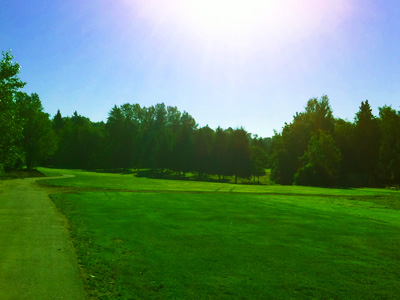As recently as May 17, 2014, Tiger Woods was the No. 1 golfer in the world.
On his 40th birthday, Dec. 30, 2015, Woods is ranked 416th in the year-end Official World Golf Ranking.
The arithmetic is simple to compute, but Woods’ fall from his perch as best golfer in the world has been deeper and more shocking than even the stark contrast of numbers suggest. In 2015, Woods posted his two worst PGA Tour scores of his career: first, a second-round 82 that sent him packing from the Waste Management Phoenix Open in February, topped in May by a third-round 85 at the Memorial Tournament, an event he has won five times.
He had one top-10 finish in his worst year as a pro, coming in the Wyndham Championship, an emergency start meant to be a Hail Mary attempt to get into the PGA Tour’s FedEx Cup playoffs. It turned out to be his last start of the year when his T-10 effort wasn’t good enough to get to the postseason.
Woods missed four cuts this year, two more than any other season in his career. Unfortunately, he missed two cuts the year prior, too. He missed consecutive cuts for the first time in his career, too. In the grand scheme, his penchant for making the money is still incredible, but the two-year trend is a clear sign that the game’s ultimate grinder has lost something — skill, health, will power or all of the above — that used to at least get him to the weekend.
Three of those four missed cuts came in majors. Woods has still never been sent packing early from the Masters, where he is a four-time winner, but he wasn’t around for the final two rounds of the last three majors of 2015.
And, to top it all off, Woods had not one, but two back procedures in the fall — first, a second microdiscectomy procedure to follow on a March 2014 surgery, then, followed a month later in October by a “follow-up procedure” to deal with further nerve damage and pain in the same spot on his back.
Woods probably couldn’t wait to blow out the candles on Wednesday and end this miserable year.
Yet, we, and presumably Woods, wonder: Can he ever get back to what he was?
Even the Woods haters, happy to stick sewing pins into the back of their Tiger voodoo dolls, are curious if he has one last run in him.
The answer to that question is unclear, and if you asked most anyone in golf during the low points of the year, they might have told you unequivocally that he’s done. But now, looking back at all he has accomplished — 79 PGA Tour wins, 14 majors, some 25 scoring and money titles — it makes it hard to count the guy out so quickly. In those moments where Woods hit chip shots that would embarrass his own kids if they were hitting them, it was easy to flippantly pen his obit. By now, however, we’ve read that obit too many times to not remember just how impressive Woods was at his best and consider that he could still win again, even at a fraction of his former self.
At 40, Woods simply cannot play the kind of power game he used in his 20s and most of his 30s to dominate the sport. Rory McIlroy and Jason Day, both in the top three in the world, have more pop in the bat and can each hit the fairway at a clip Woods could only dream of achieving.
For 40-plus Woods to succeed, he would need to adopt an approach more like Jack Nicklaus, who played a steady game, applying pressure to opponents not only with his talent but also with the assurance that he was not going to be the one to blink first. Young Tiger, the old Tiger, wasn’t interested in a staring contest.
Woods has talked repeatedly about developing the golf equivalent of Michael Jordan’s fadeaway, suggesting he could still win using all of the things he has learned about the game to give him a leg up on the competition. Perhaps that’s the case, but, then again, when Day hits a 382-yard drive and a wedge into a par-5 at the PGA Championship — akin to Woods’ driver-wedge eye-openers early in his Masters career — it’s hard to imagine brains beating braun.
In the majors, Woods’ experience and golf intelligence would most come in handy at the Masters and in the British Open.
At Augusta National, each successive round on the property gives a player another piece of the jigsaw puzzle to Alister Mackenzie’s masterpiece. In a cruel twist, however, that incremental knowledge with each and every shot fights against the natural decline in a golfer over time. Jack Nicklaus found equilibrium at 46 in 1986. Ben Hogan was won his two Masters titles on either side of 40 in 1951 and ’53. Woods’ former close friend Mark O’Meara did in 1998 at age 41. Phil Mickelson did just two months shy of his 40th birthday in 2010.
In the Open, links-style golf can command the type of repertoire that, frankly, only Woods truly has. The generation Woods inspired grew up thinking any shot was possible to execute however they felt comfortable, doing it with equipment that made it more difficult to develop confidence pulling off quirky shots that had a knack for just plain working. If Woods could keep his ball in play off the tee — as in, on the property — then he could be dangerous. Three of the last five British Open winners have been in their 40s. Zach Johnson was 39 when he won in July. Tom Watson came within 5 feet of winning the Claret Jug at age 59. Surely, Woods could get that close sometime before then?
But maybe not. It’s awfully hard to win a major after the age of 40. Only 36 times out of 435 times has someone in their 40s won one of the four modern majors — barely over 8 percent of the time. No player has won more than three majors in their 40s, with both Ben Hogan and Jack Nicklaus doing so.
In Woods’ professional career, only six players have won a major in their 40s (Mark O’Meara, 1998 Masters and British Open; Payne Stewart, 1999 U.S. Open; Vijay Singh, 2004 PGA Championship; Darren Clarke, 2011 British Open; Ernie Els, 2012 British Open; Phil Mickelson, 2013 British Open). For as great as Vijay Singh was in his 40s, winning a PGA Tour record 22 times, only one of those victories was a major.
Past results don’t have a whole lot to do with later-life success, either. Arnold Palmer and the aforementioned Watson didn’t win majors in their 40s. Julius Boros took two of his career three post-40, including becoming the oldest major winner ever at 48 in the 1968 PGA. O’Meara won both of his majors in 1998. Nicklaus gobbled up two at 40 in 1980.
However, history can’t illuminate much about the prospects of a guy who has had his back cut open three times in the last 20 months. Woods said earlier this month at his Hero World Challenge that he doesn’t know when he’ll be able to start full rehab, so for now, his rehab is doing nothing. He doesn’t know when he’ll be able to swing a golf club with real purpose again. He said the desire to return is there, but he’s at peace with what he has accomplished.
Woods’ greatest battle from here on out won’t be trying to find four more majors to catch Nicklaus, or even a fifth to get him to 19. No, Woods’ greatest challenge will be figuring out who he is as a golfer at 40, who he thinks he can be at his new-normal best and if he has the will power to reach whatever that ceiling is.
Ryan Ballengee is a Yahoo Sports contributor. Find him on Facebook and Twitter.
Follow @RyanBallengee
LISTEN TO OUR WEEKLY GOLF PODCAST! This week: Setting the bar after Jack Nicklaus and Tiger Woods
Devil Ball Golf – Golf – Yahoo Sports
Other Related Posts:
There are few partnerships between golfer and sponsor that have worked out ...
There are guys that can close, like Bubba Watson did a month ago at the Mas...
The two captains who will face off in the 2017 Presidents Cup were announce...
Sergio Garcia and fiancée Angela Akins are set to wed in July. (Getty) Ever...
Golf is a little different in Australia, in more ways than one. For this Au...
















